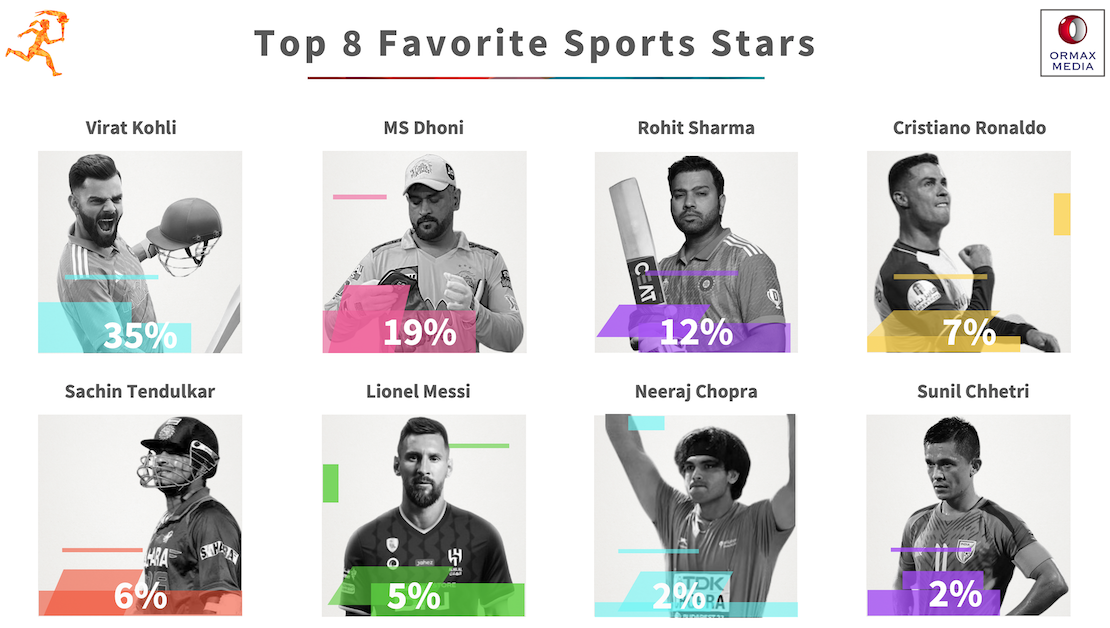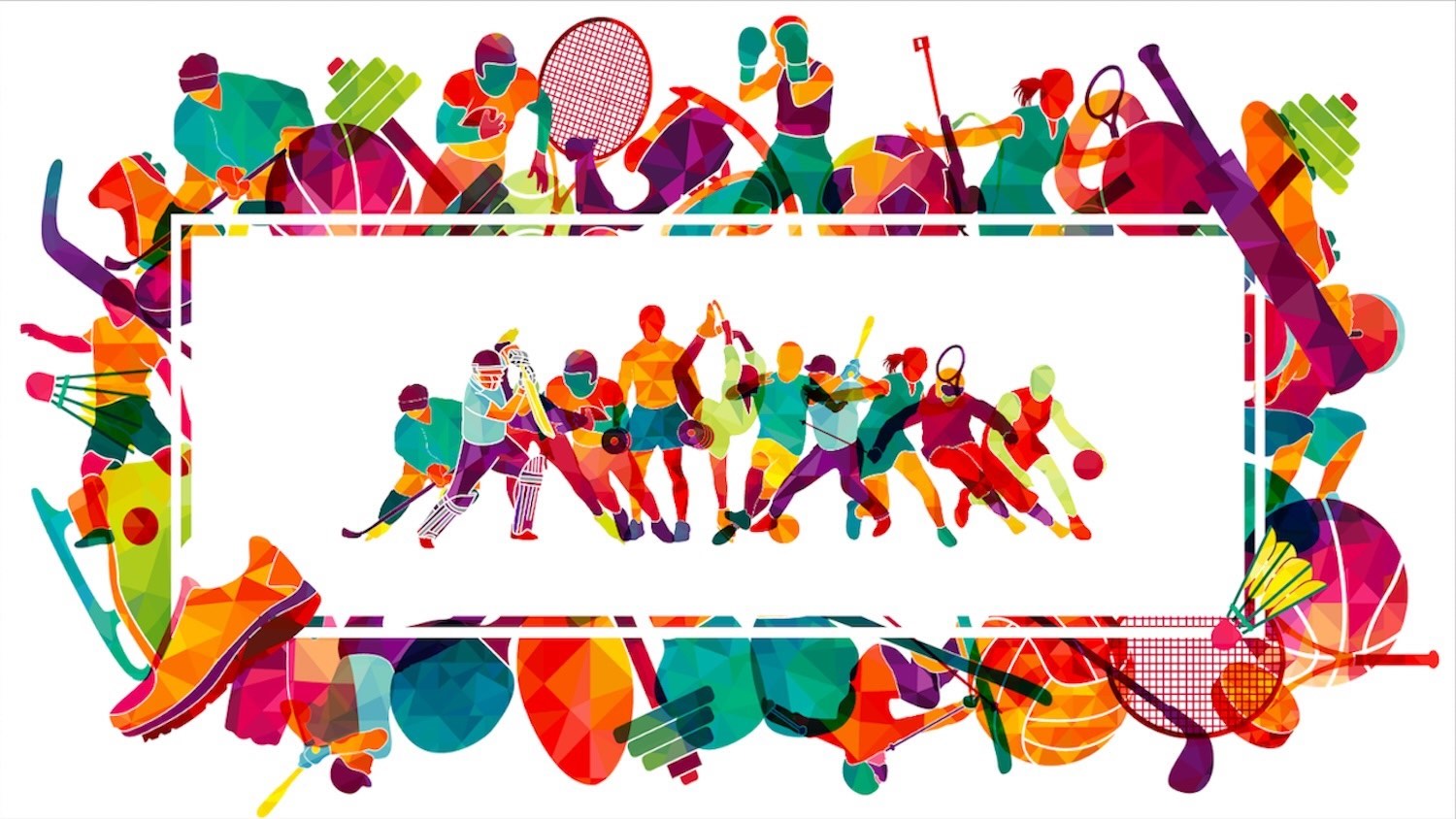


In our recently-released research titled The Ormax Sports Audience Report: 2024 (read more here), we asked sports audiences to name their top two favorite sportspersons. The section of the report called Ormax Sports Stars reports popularity share of sportspersons in India, calculated based on this question. 19 sportspersons manage to achieve a share of 1% or more, the top 8 of which had 2%+ share, and can be seen in the image below. But what is more interesting in this somewhat-predictable list is its gender breakup: Female sportsperson held only 4% popularity share, compared to 96% share for male sportspersons.

Only three female sportspersons managed 1% share each: PV Sindhu, Sania Mirza and Saina Nehwal. Despite the growing interest in women’s cricket, no female cricketers make the 1% mark. Even among female sports audience, who comprise 33% of India’s sports universe, popularity share of female sportspersons is only 5%. In other words, irrespective of their gender, Indian sports audience invariably pick male sportspersons as their favorites. Why are these numbers so lopsidedly stacked in favor of male sports stars?
One argument can be that it is because of the immense popularity of men’s cricket in India, while the other argument can be that this extreme gender difference is a result of the larger issue of the deep-seated gender inequality in the Indian society, and popularity of men’s cricket is only a symptom of that, and hence, not the real cause. We decided to explore this topic.
Before we focus on India, a logical question to ask is: What would the gender breakup of sportsperson popularity look like in a developed country? In the absence of access of a similar research, we decided to look at surrogates. And we managed to find a few:
1. This list of the most popular sportspersons of all-time, compiled by YouGov US, features 8 women in the top 100.
2. This list is the contemporary equivalent of the all-time list above, and features 10 women in the top 100.
3. As per this Two Circles article, attendance of women’s sports in UK in 2022 increased from 0.9 Million to 2.4 Million, but remains a small fraction of total attendance (76.2 Million).
4. This report, produced in partnership with ESPN Research, estimates that women’s sports accounted for 15% sports media coverage in the US in 2023. Even though it is significantly higher than the 4% estimated media coverage in 2019, the gender gap is still very wide.
It can be broadly concluded that the disparity in popularity of male and female sportspersons is not just restricted to India, but is a global trend. And it is not surprising. After all, sports have been dominated by men for centuries. The first Olympics in the modern era (1896) were not even open to sportswomen. It was only as recently as the 2012 London Olympics that women had a representation in all sports.
Across the world, there is divided opinion on why women sportspersons don’t get much attention from sport audiences. One point of view is that women just aren’t as ‘capable’ as men when it comes to sports, whereas the other is that women are wrongly subjected to this flawed bias about their ability, and it’s a lack of a supportive ecosystem that prevents them from becoming popular.
Physical ability plays a significant role in sport, and there are known genetic differences between the two genders. This leads to a logical separation of sports into male and female disciplines, because all other things being the same, male athletes are likely to be stronger and faster physiologically. Strength and speed, among other physiological abilities, can make many sports more watchable. But then, there are many sports like Tennis, Volleyball, Hockey and Table Tennis, to name just a few, where skill, more than strength, drives performance. Hence, the physiological argument is valid but limiting.
The physiology factor could explain some skew (let’s say 70:30), but the numbers, such as those above, begin to look highly lopsided because women’s sport has traditionally not got infrastructural and sponsorship support, leading to poorer quality of production and media coverage over the years. This impacts their viewership, which then perpetuates the argument in favor of male sports.
India’s highly patriarchal society is an additional barrier for women’s sports in country, which explains the 4% number, compared to 10-25% equivalent via the surrogates. Our society has long focused on marriage being a key ‘life objective’ for women. Veteran anchor Rajdeep Sardesai infamously asked Sania Mirza in a 2016 interview about her plans to “settle down”. The tennis star gave a fitting reply, and social media was quick to call out the anchor’s deep-seated gender bias. It doesn’t help matters that the administration doesn’t have a well-defined policy to promote women’s sports in India. The story of women wrestlers, including several medal winners, fighting the administration in a sexual harassment case has been in the news for more than a year now.
India is a cricket crazy nation, and BCCI is the richest cricket body in the world by a yawning margin. Within cricket, the focus on men’s cricket is a symptom of both the global perception bias against women athletes, and of our patriarchal society, which has accentuated that bias by not encouraging capable and talented women to enter the world of sports. It took BCCI 15 long years to launch Women’s Premier League (WPL) in 2023, when it had all the resources at its disposal to do so at least a few years earlier. The league has grown in stature in just two years, and has delivered healthy viewership numbers, which have grown from the first edition to the second. And that shows that marketing and packaging, more than the sport itself, is a crucial factor when it comes to growth of women’s sports, and that of sportswomen as a result. We have seen the role a big media house (Star India) played in bringing the sport of Kabaddi to the mainstream. A women’s edition of the Pro Kabaddi League would be a logical next step, one hopes.
One look at this stirring ad of the FIFA Women’s World Cup 2015 by FOX Sports, and we know what gender inclusion in sport can look like, and the role media can play in driving it.

678 million sports audiences in India... Game on!
The first edition of The Ormax Sports Audience Report: 2024, based on India’s largest sports research, reveals various insights about sports content consumption in India
Subscribe to stay updated with our latest insights
We use cookies to improve your experience on this site. To find out more, read our Privacy Policy